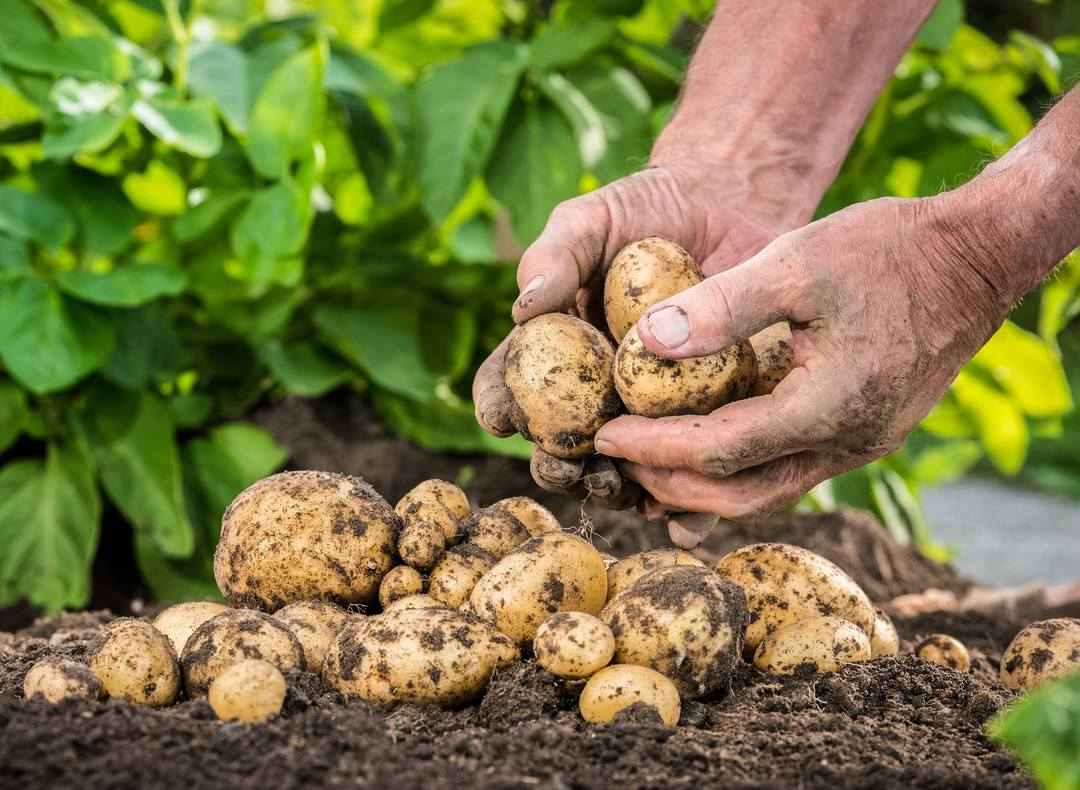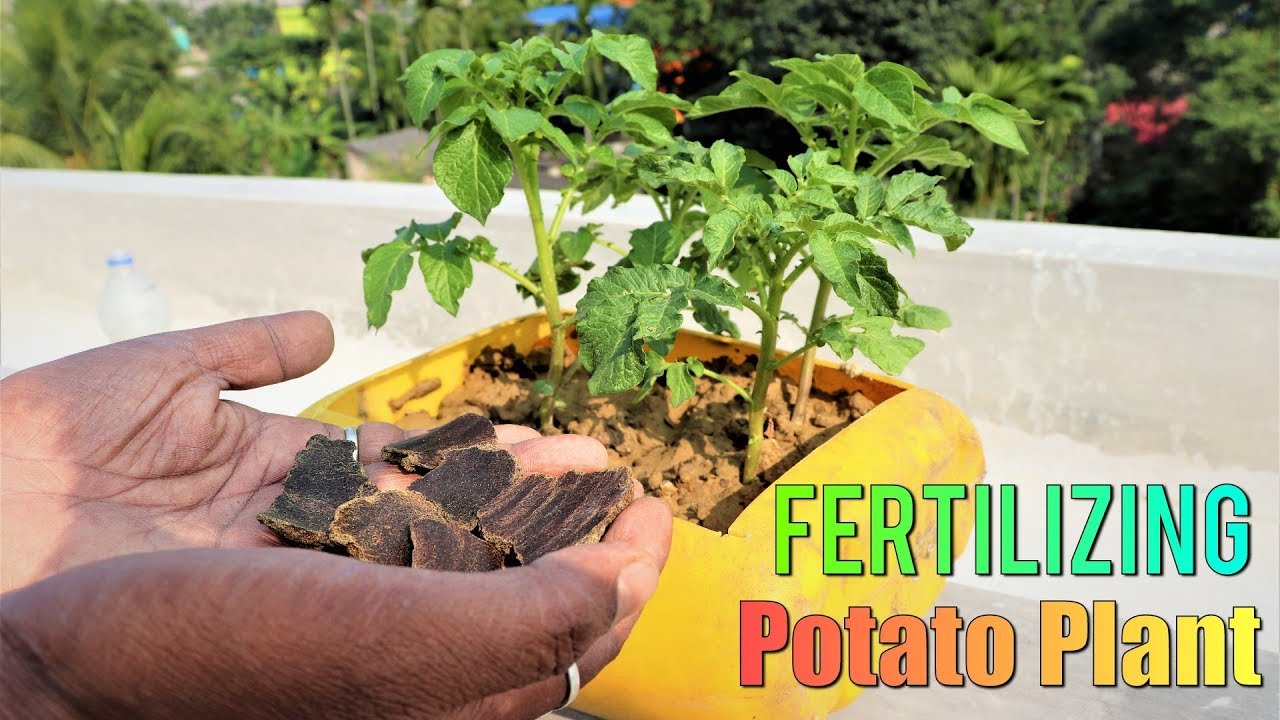To fertilize potatoes, apply a balanced fertilizer that contains equal parts nitrogen, phosphorus, and potassium to the soil. Additionally, you can incorporate organic matter, such as compost or well-rotted manure, before planting to improve soil fertility.
By following these steps, you can ensure that your potato plants receive the necessary nutrients for healthy growth and improved yields. Potatoes are a versatile and nutrient-rich vegetable that can be grown in home gardens or on a larger scale.
To successfully cultivate healthy potatoes, it is essential to provide them with proper nutrition. Fertilizing potatoes is a crucial aspect of their care, as it ensures the plants receive the necessary nutrients for optimal growth and abundant yields. This article discusses the steps to fertilize potatoes effectively, including the use of balanced fertilizers and organic matter. By following these recommendations, you can enhance the overall health and productivity of your potato plants, resulting in a bountiful harvest of delicious tubers.

Credit: www.allotment-garden.org
The Importance Of Fertilizing Potatoes
Fertilizing potatoes is crucial for ensuring healthy plant growth and maximizing yield. Potato plants have specific nutrient requirements that need to be met in order to promote strong tuber development and disease resistance.
Nutrient requirements of potato plants:
| Nutrient | Function | Key Sources |
|---|---|---|
| Nitrogen | Stimulates foliage growth and enhances chlorophyll production. | Manure, compost, nitrogen-based fertilizers. |
| Phosphorus | Promotes root development and supports tuber formation. | Bone meal, rock phosphate, phosphorus-rich fertilizers. |
| Potassium | Aids in overall plant vigor, disease resistance, and tuber quality. | Wood ash, potassium sulfate, potash-based fertilizers. |
Benefits of proper fertilization:
- Increased tuber yield and size
- Improved disease resistance
- Enhanced root development
- Optimized nutrient uptake
- Enhanced quality and taste of potatoes
By understanding the nutrient requirements of potato plants and providing the appropriate fertilization, you can support their growth and maximize your potato harvest. Remember to follow the recommended application rates and timings for best results.
Understanding The Nutrient Requirements Of Potatoes
|
Potatoes require essential nutrients for optimal growth. These essential nutrients play a crucial role in providing the plants with the necessary elements for their development. The main factors affecting nutrient uptake include soil pH, temperature, moisture levels, and the availability of nutrients in the soil. Essential nutrients for potato growth:
Ensuring that potatoes receive adequate amounts of these essential nutrients can help maximize yields and prevent nutrient deficiencies. It’s important to conduct soil tests to determine the nutrient levels and pH of the soil, which can guide the appropriate fertilization plan. Additionally, maintaining proper irrigation practices and using organic fertilizers can contribute to healthy potato growth. |
Different Types Of Fertilizer For Potatoes
When fertilizing potatoes, it is important to consider the different types of fertilizer available. Organic fertilizers are a popular choice among gardeners looking for environmentally friendly options. These fertilizers are derived from natural sources, such as compost, animal manure, or bone meal. They provide essential nutrients to the soil while improving its overall health and fertility. Organic fertilizers also promote the growth of beneficial microorganisms, which aid in breaking down organic matter and releasing nutrients to the plants.
On the other hand, synthetic fertilizers are chemically formulated and provide a quick release of nutrients to the plants. They are often higher in nitrogen, phosphorus, and potassium content compared to organic fertilizers. Synthetic fertilizers can be beneficial when immediate results are desired, such as in cases of nutrient deficiencies or poor soil conditions. However, they can have negative environmental impacts when used excessively or improperly.
Both organic and synthetic fertilizers have their advantages and disadvantages, so it is important to consider factors such as soil quality, plant needs, and environmental concerns when choosing the right fertilizer for your potatoes.
How to Fertilize Potatoes: Step by Step Guide
Organic Fertilizers For Potatoes
When it comes to fertilizing potatoes, there are several organic options available. Compost is a fantastic choice, as it enriches the soil with valuable nutrients and helps retain moisture. Applying a layer of compost around the base of the potato plants during planting or as a topdressing throughout the growing season can provide essential nourishment.
Manure is another excellent organic fertilizer option for potatoes. It contains high levels of nitrogen, phosphorus, and potassium, which are essential for healthy growth. Incorporating well-rotted manure into the soil before planting can significantly improve soil fertility and promote robust potato crops.
If you’re looking for a natural and effective way to enrich your potato beds, consider using cover crops. These crops, such as clover or rye, are planted during the off-season to help prevent soil erosion, suppress weeds, and add nutrients to the soil when turned under before planting potatoes.
Synthetic Fertilizers For Potatoes
Synthetic fertilizers are commonly used for fertilizing potatoes. These fertilizers contain essential nutrients that promote healthy growth and high yields. Nitrogen-based fertilizers are particularly important for potatoes as they help in the development of foliage and improve overall plant vigor. They boost leaf production, which is vital for the process of photosynthesis. Phosphorus-based fertilizers play a crucial role in promoting strong root development and aiding in the growth of tubers.
They enhance the plant’s ability to absorb key nutrients and improve overall yield quality. Potassium-based fertilizers are essential for potato plants as they increase resistance to diseases, improve water uptake, and strengthen overall plant structure. These fertilizers also enhance tuber quality and help in their storage capabilities. Synthetic fertilizers provide targeted and readily available nutrients, ensuring optimal growth and yield of potatoes.
When And How To Fertilize Potatoes
Pre-planting fertilization is a crucial step in ensuring healthy potato growth. Before planting, it is recommended to apply a balanced fertilizer, such as a 10-10-10, to the soil. Spread the fertilizer evenly over the planting area and mix it into the top 6 inches of soil. This provides essential nutrients for the growing plants.
Side-dressing during the growing season is equally important. About 4 to 6 weeks after planting, when the potato plants are around 6 to 8 inches tall, apply a nitrogen-rich fertilizer, like ammonium nitrate, alongside the rows. This helps promote foliage growth and overall plant health.
Timing and frequency of fertilizer application depend on various factors, including soil conditions and potato variety. As a general rule, it is advisable to side-dress the potatoes every 4 to 6 weeks until the plants start flowering. Be cautious not to over-fertilize, as excessive amounts can lead to excessive foliage and reduce tuber development.
| Pre-planting fertilization | Side-dressing during the growing season | Timing and frequency of application |
|---|---|---|
| Apply a balanced fertilizer before planting | Apply a nitrogen-rich fertilizer when the plants are 6-8 inches tall | Side-dress every 4-6 weeks until flowering, avoiding excessive amounts |
Tips For Properly Fertilizing Potatoes
Properly fertilizing potatoes is essential for a successful harvest. To calculate the right amount of fertilizer, consider the size of your potato patch and the nutrient requirements of potatoes. A basic rule of thumb is to use 1 to 2 pounds of fertilizer per 100 square feet of planting area. However, it’s important to follow the specific instructions on the fertilizer packaging for the best results.
When applying fertilizers, it’s crucial to distribute them evenly across the soil. This can be achieved by using a spreader or by hand broadcasting. Even coverage ensures that each potato plant receives the necessary nutrients for healthy growth.
Avoid over-fertilization as it can lead to burn plants and reduce overall yields. Excessive amounts of certain nutrients, such as nitrogen, can also promote the growth of foliage at the expense of tuber development. Follow the recommended application rates and schedule to prevent overloading the soil with fertilizers.
Monitoring And Adjusting Fertilizer Application
| Blog post title: | How to Fertilize Potatoes |
|---|---|
| Heading: | Monitoring and Adjusting Fertilizer Application |
| Subheading: Plant nutrient deficiency symptoms |
|
| Subheading: Soil testing for nutrient levels |
Regular soil testing is crucial to determine the nutrient levels in your potato growing area. A professional soil analysis will help identify any deficiencies or imbalances. Collect soil samples from different parts of your garden and send them to a reliable laboratory for analysis. The soil test results will provide insights into the nutrient composition and pH levels. Based on these findings, you can customize your fertilizer application to address specific deficiencies. It’s important to note that different soils require different nutrient ratios, so soil testing is a valuable step in improving your potato crop’s health and productivity. |
| Subheading: Making necessary adjustments |
Once you receive the soil test results, you can make necessary adjustments to your fertilizer application. If the test indicates a deficiency in a particular nutrient, choose a fertilizer that is high in that nutrient. For example, if the soil lacks nitrogen, choose a nitrogen-rich fertilizer. Apply the fertilizer according to the recommendations provided by the soil analysis report. It’s important to follow the recommended application rates to avoid over-fertilization, which can lead to environmental pollution and negative effects on plant health. Regular monitoring of your potato plants’ health is essential. Keep an eye out for any signs of nutrient deficiencies, such as yellowing leaves or stunted growth. If you spot any symptoms, you can make further adjustments to the fertilizer application to ensure optimal nutrient supply for your potatoes. |
Frequently Asked Questions Of How To Fertilize Potatoes
What Is The Best Fertilizer For Potatoes?
The best fertilizer for potatoes is one that is high in potassium, such as a 10-20-20 blend. This helps promote tuber growth and improves overall yield. Applying the fertilizer at planting and during the growing season can provide the necessary nutrients for healthy potato plants.
When Should I Fertilize Potatoes?
Fertilize potatoes after planting, once sprouts emerge. Apply a balanced fertilizer, like 10-10-10, following the package instructions. Repeat every 2-3 weeks throughout the growing season. Avoid over-fertilizing, as it can lead to excessive leaf growth and lower tuber production.
What Is The Best Fertilizer For Potatoes After Planting?
The best fertilizer for potatoes after planting is a balanced blend of nutrients like nitrogen, phosphorus, and potassium. A 10-10-10 or 15-15-15 formula works well. Apply it around the plants, avoiding direct contact with the foliage, and water thoroughly.
How Much Nitrogen Do Potatoes Need?
Potatoes require a significant amount of nitrogen for optimal growth. The exact amount varies depending on the type and soil conditions, but typically, potatoes need around 150-200 pounds of nitrogen per acre.
Conclusion
Fertilizing potatoes is a crucial step in ensuring a successful harvest. By following the proper techniques and using the right fertilizers, you can provide the necessary nutrients for your potato plants to thrive and produce abundant yields. Remember to consider the specific needs of your soil and potato variety, and monitor the growth progress throughout the season.
With a well-designed fertilizing plan, you can enjoy a bountiful potato harvest and maximize the potential of your garden. Happy gardening!

